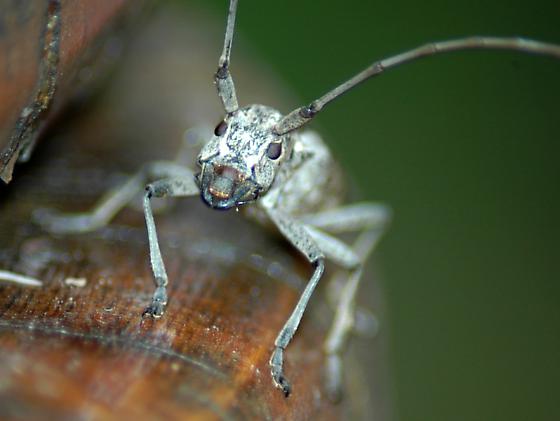Reproduction
 The
Monochamus notatus life cycle usually requires two years to
complete. The adults emerge around in the spring, and they feed
on coniferous plants until mating occurs. Females chew slits
into the bark to deposit their eggs. The larvae emerge after
approximately two weeks and begin feeding. They make their way back to the
surface after overwintering; this creates a u-shaped tunnel. They
then pupate near the surface, and the adults will emerge the
following spring (Entomology Collection 2001-2002).
The
Monochamus notatus life cycle usually requires two years to
complete. The adults emerge around in the spring, and they feed
on coniferous plants until mating occurs. Females chew slits
into the bark to deposit their eggs. The larvae emerge after
approximately two weeks and begin feeding. They make their way back to the
surface after overwintering; this creates a u-shaped tunnel. They
then pupate near the surface, and the adults will emerge the
following spring (Entomology Collection 2001-2002).
Males in the genus Monochamus tend to have longer antennae. This has been tracked down to a probable reproductive strategy. In order for one beetle to sense the presence of another their antennae have to come in contact with each other. The longer antennae allows male to perceive potential rivals over a much larger area (Hughes 1979).